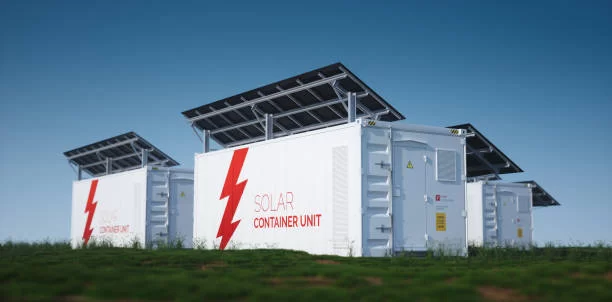The Profound Impact of Battery Container Technology on the New Energy Vehicle Industry
In the era of rapidly emerging new energy vehicles (NEVs), the development of battery container technology has become a pivotal force driving the industry forward. It influences vehicle performance, safety, and costs, while also shaping the overall market landscape of NEVs.

Enhancing Range, Breaking Range Anxiety
The driving range of NEVs has always been a focal point for consumers, and advancements in battery container technology play a crucial role in this aspect.
Traditional battery containers have design and material limitations, making it difficult to significantly increase battery energy density. However, with the emergence of new technologies, such as advanced composite materials and optimized structural designs, battery containers can now hold more battery cells within the same volume, thereby significantly increasing energy storage capacity.
For instance, a new type of battery container uses high thermal conductivity and high-strength materials, reducing its weight while creating an ideal operating environment for the battery. This enhances the charging and discharging efficiency, allowing the vehicle to travel further on a single charge, effectively alleviating consumers’ range anxiety.
Enhancing Safety, Ensuring Worry-Free Travel
Safety is a crucial aspect of NEV development, and battery containers play a key role in this area.
High-quality battery containers can withstand external impacts and collisions, effectively preventing safety issues caused by internal short circuits and overheating. Some advanced battery containers are fireproof, explosion-proof, and waterproof. In extreme situations, such as collisions or flooding, the battery container can effectively isolate the battery from the external environment, reducing the risk of fire and electric leakage.
Additionally, the integration of smart monitoring systems with battery containers is a current development trend. Sensors installed inside the container can monitor battery parameters such as temperature, voltage, and current in real-time. If any abnormalities are detected, protective measures can be promptly taken, ensuring the safety of the vehicle and passengers.
Optimizing Space Layout, Enhancing Driving Experience
The interior space design of NEVs is a major concern for consumers, and the development of battery container technology offers new possibilities for optimizing space layout.
In the past, large and irregularly shaped battery containers often took up significant interior space, affecting passenger comfort and storage capacity. Now, with integrated and modular design concepts, battery containers can better integrate with the vehicle chassis, reducing space occupation.
For example, some models integrate the battery container into the vehicle’s bottom, lowering the vehicle’s center of gravity and improving driving stability. This also creates more legroom and larger trunk capacity, providing passengers with a more comfortable and convenient driving experience.
Reducing Production Costs, Promoting Market Adoption
Cost is a significant factor limiting the widespread adoption of NEVs, and innovations in battery container technology promise breakthroughs in this area.
On one hand, advancements in manufacturing processes and large-scale production have gradually reduced the cost of producing battery containers. For example, new injection molding processes and automated production lines can significantly improve production efficiency and reduce labor costs.
On the other hand, optimized design and material selection have lowered raw material costs for battery containers. Using more cost-effective and high-performance composite materials instead of traditional metals maintains strength and safety while reducing costs.
Cost reduction enhances the price competitiveness of NEVs, facilitating their widespread market adoption.
Accelerating R&D Innovation, Leading Industry Transformation
The rapid development of battery container technology also stimulates innovation within the NEV industry.
Automakers and related companies are increasing investment in battery container technology R&D, constantly exploring new design concepts and manufacturing processes. This not only advances battery container technology but also promotes collaborative innovation across the entire industry chain.
For example, some companies collaborate with research institutions to conduct studies on thermal management, structural optimization, and intelligent control of battery containers, achieving significant results. These innovations not only improve NEV performance and quality but also set a direction for the industry’s future development.
In summary, the development of battery container technology has a profound, multi-faceted impact on the NEV industry. From enhancing range and safety to optimizing space layout, reducing costs, and promoting innovation, it is steering the NEV industry towards a more mature, efficient, and sustainable future. With continuous technological advancements, we can expect future NEVs to offer superior performance and competitive prices, becoming the preferred choice for transportation and bringing about a significant transformation in global mobility.
